How to plant: step by step instructions
Step-by-step instructions for planting peonies will come in handy even for experienced gardeners. To avoid mistakes and plant the plant correctly, we recommend following our advice.
- First, prepare your seedlings. If you use potted flowers purchased for seedlings, then before removing them, the soil must be moistened in order to release the roots without damage to the plant.
- The next step is to prepare the planting pit for the bartzella peony. It must be dug out in advance so that the soil can be saturated with oxygen. The depth of the pit must be at least forty-five centimeters, and the radius must be at least seventy-five centimeters.
- At the bottom of the finished pit, it is necessary to lay out a drainage layer, which will prevent excess moisture from entering the roots of the plant. It is better to use fine gravel or sand for this purpose.
- The next layer should be a mixture of fertile soil with mineral fertilizers. It needs to fill the pit by about two-thirds.
- Now you should plant the seedling in open ground. This must be done in such a way that the buds of the plant are at the same level, and also sunk into the ground by no more than five centimeters.
- If a seedling is planted from a pot, it should be lowered into the hole along with the soil in which it grew.
- Cover the planted peony with earth and compact it on top with your palm.
- Water the plants, allocating a bucket of water for each plant.
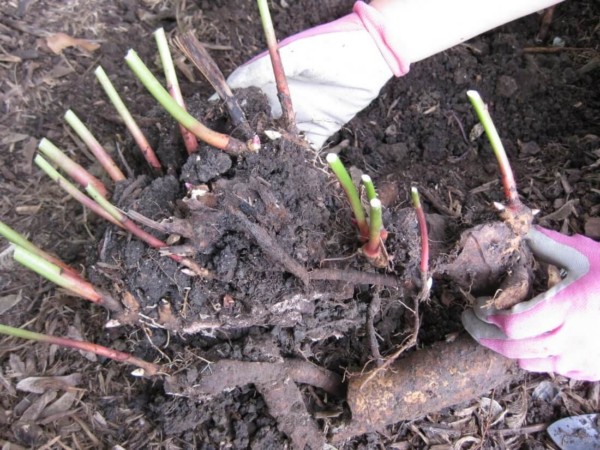
After the peonies are planted, the soil under them should be mulched to slow down the evaporation of moisture. For the next few weeks, until the roots take hold, the crop needs to be well cared for.
Peculiarities
The Ito hybrid "Bartzella" is a peony variety bred at the end of the last century by an American breeder named Roger Anderson. This variety was awarded two awards at once from the American Peony Society - for its attractive appearance and high decorativeness. Here is a description of it with all the main qualities.
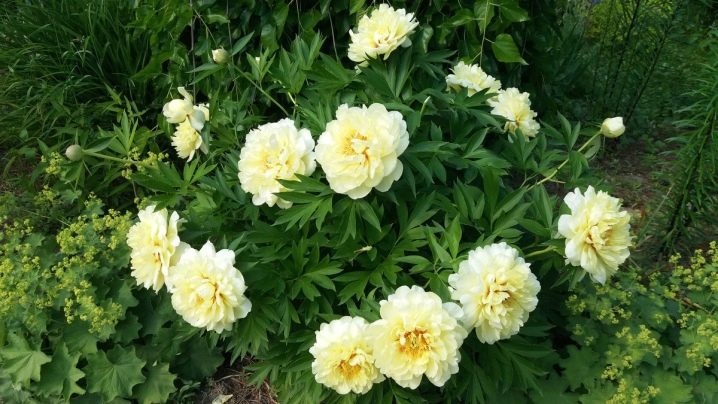
Peony "Bartzella" is a herbaceous perennial. It can grow up to almost a meter in height and grow just as wide, resulting in a rather attractive ball of leaves and flowers.

This variety has thick, feathery, dark green leaves. They very well set off its large semi-double flowers of lemon yellow color. Flowers, by the way, also grow quite densely, up to 60 buds on one bush, and are scattered along the entire perimeter of the bush from the very roots to the crown. One flower can be up to 25 centimeters in diameter.

Due to its shape and size, the flower is excellent for single planting. And also it can be used to build flower arrangements. But be careful - the flower does not react well to other plants nearby, and therefore try to pair it with something less demanding than itself.
The bush blooms once a year. Flowering begins in mid-June and lasts until mid-July. True, for the first time the bush will delight you with flowers only 3 years after planting. During the flowering period, a very pleasant and delicate aroma comes from it. This variety is quite resistant to frost (withstands temperatures down to -30 ° C), and therefore the foliage on it stays until November.
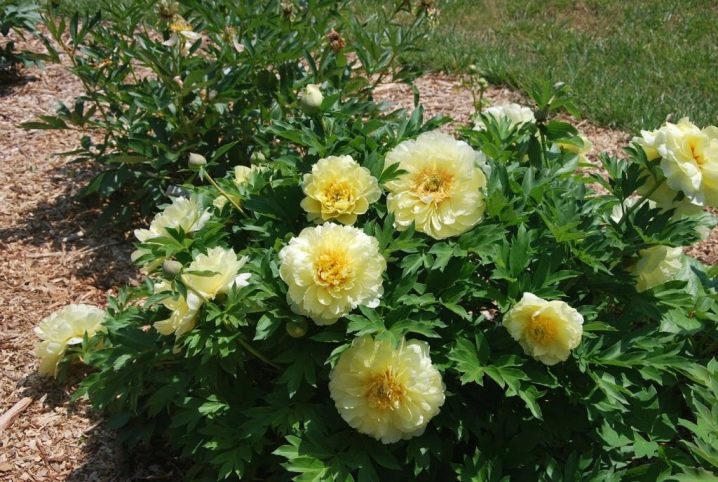
Reproduction of Bartzell peony: the most common ways
Peony Bartzella is considered a fairly rare and very valuable variety of this culture, therefore, it is important to approach it with all seriousness and caution when breeding it on your site. From the experience of many gardeners who have come across this plant, it can be judged that the reproduction of the yellow Bartzell peony is a rather complicated and troublesome process, moreover, it is not always possible to achieve a positive result.The most optimal way to reproduce the peony of the Ito hybrid, which Bartzella is, is the division of the rhizome
This plant is not bred with seeds, since it is almost impossible to obtain such planting material. Reproduction by cuttings can also be noted - it is rarely used, but it still has a right to exist. Consider the main breeding characteristics of the Bartzell peony
The most optimal way of reproduction of the Ito hybrid peony, which Bartzella is, is the division of the rhizome. This plant is not bred with seeds, since it is almost impossible to obtain such planting material. Reproduction by cuttings can also be noted - it is rarely used, but it still has a right to exist. Consider the main breeding characteristics of the Bartzell peony.
Reproduction by division of peony Bartzella rhizome
This method is not so difficult, the main thing is to do everything correctly and accurately.
First of all, you need to choose the right time for reproduction by dividing the rhizome. This can be done in the spring, around the end of April or early May, as well as in the fall or late August - early September. If you have chosen the spring division of the bush, then you need to be prepared for the fact that you will have to water the young plants more often and shade them from the sun. The most optimal is the autumn planting of the Bartzell peony, which is chosen by many growers.
It is also worth remembering a few rules that can competently guide you through the process of breeding a peony. It is possible to divide the rhizome only in peony bushes that have reached 3-4 years old.
First of all, you need to water the peony bush well in order to facilitate its further extraction. This is due to the fact that the root system of the plant is quite extensive and it is necessary to dig out the bush in such a way as not to damage the numerous roots.
After you dig out the bush, you need to shake it slightly to shake off the soil.
Place the rootstock of the plant on the ground or on top of any covering material. Next, a difficult stage begins, since it requires care and accuracy. The rhizome must be divided into 2 or sometimes 3 parts. In this case, a knife and pruner can not always help. The rhizome of the peony is so thick and strong that you need a hacksaw to cut the central log.
This tool must be used very carefully so as not to damage the root system.
When dividing the rhizome, it is important to remember that each division must have at least 5 buds of resumption of growth and the same number of roots. With the autumn division, you can focus on shoots.
After you have divided the root system of the plant, many experienced gardeners recommend treating the cuttings with root stimulants, which will greatly speed up and simplify the rooting of the Bartzell peony.
Further, the places of the cuts must be treated with a solution of potassium permanganate and sprinkled with crushed coal so that they dry out and heal faster.
It will take some time to dry, during which you can have time to prepare places for planting new plants.
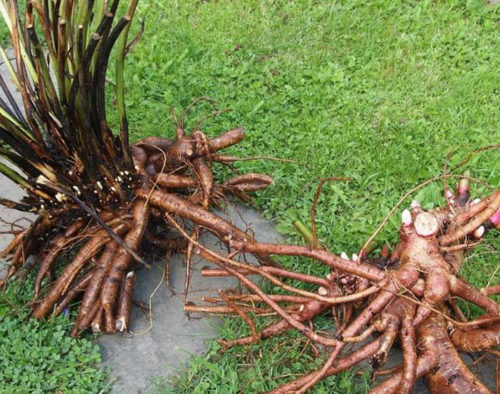
Propagation of Bartzell peony by cuttings
- As noted above, there is another way to propagate the Bartzell peony - the cuttings method, but it is very rarely used. This method is designed for a long-term result, since the flowering of young plants can only be expected after a few years. Cuttings are most often used for propagation of especially valuable varieties, such as the Bartzella peony, as well as for a complete renewal of the root system.
- A bush from 5 to 10 years old is suitable for this.
- It is best to prepare more cuttings, since their survival rate is quite low.
- The stems need to be cut off near the ground, after which they are divided into cuttings with two internodes on each.
- Before rooting, all cuttings are treated with growth stimulants.
- Rooting takes place in greenhouse conditions with high humidity. It is possible to air the cuttings only after 3 weeks gradually.
- Before winter, all cuttings are cut above the ground and covered with fallen leaves on top.
- In the spring, they can be transplanted to a permanent place.

Characteristics and description of Ito-pions
Japanese breeder Ito conducted over 1200 crosses before achieving the desired result. The main purpose of the procedures was to obtain large-flowered yellow peonies. This could not be achieved by combining garden varieties, then Ito began to combine herbaceous and tree species using his own unique genetic technique. Herbaceous and tree-like varieties combined the best qualities in Ito hybrids.
Ito-peonies are strong, beautiful plants with a sturdy stem that stretches up to 100 centimeters. Characteristic features of Ito peonies:
- the presence of large buds that reach 20 centimeters in diameter;
- petals are painted in rich deep pastel colors;
- the ability to bloom for a long time and abundantly;
- the presence of a dense herbaceous stem, the branching of which is structured;
- the stem does not require a garter;
- increased winter-hardy qualities.
Information! One of the differences between Ito-peonies and herbaceous relatives is a weak aroma.
Necessary crop care
Planting and growing Ito hybrids is a process associated with constant control over the condition of the plant. Violations of the rules of care can lead to death or the development of diseases.
Watering and fertilizing
Watering is an important part of grooming. In the spring, plants are spilled with a manganese solution to disinfect the soil. Then a watering schedule is established. During the period of active growth and color formation, the bushes need a constant supply of moisture. Each bush is watered weekly along a furrow specially dug a few centimeters from the main stem. For each adult bush, you will need 1-2 buckets of warm water. The soil around the plant must be kept moist, this is due to the structural features of the root system.

After flowering begins on the bush, watering is reduced. After flowering, a new stage begins when the soil must be constantly moistened. The budding of the next season depends on the observance of this rule.
Top dressing is divided into several stages:
- Spring. Spillage with manganese solution.
- Summer. Superphosphate and potassium sulfate are added before flowering.
- Monthly. Introduction of mineral foliar mixtures.
- Pre-winter. Top dressing using mineral formulations.
Mulching and loosening the soil
Peonies do not tolerate weeds growing next to the stem. The root system of peonies, which is located at a distance from the main stem, needs a lot of free space, they cannot share it with other plants. Loosening the soil solves the problem of weed growth, while simultaneously saturating the soil with oxygen, making it looser and lighter.

Mulching peonies solves several problems:
- protects against weeds;
- retains moisture;
- keeps warm;
- helps protect against disease and pest infestations.
Attention! For mulching, use coniferous bark, needles or freshly cut grass. If the grass begins to actively rot, then the mulch layer must be replaced.
Treatment against pests and diseases
Tight, unblown buds often attract various pests. Aphids, bronzes, thrips - an incomplete list of peony lovers. They are destroyed with common insecticides or using proven folk remedies.

Peony bushes are especially loved by ants. The sweet syrup that releases the unblown bud attracts ants and they settle on the entire surface of the flower. One of the options for the fight is to flood the anthill, which is located near the bush, with boiling water.
Preventive measures, which are carried out in spring and autumn, protect against diseases.
Transfer
A suitable time for planting or transplanting a peony bush is the second half of August or the first half of September.At this time, the plants go through a dormant period, so all procedures will be painless.
The timing can be shifted at your discretion, but it is important to comply with the main requirement - the cuttings must take root before the onset of frost
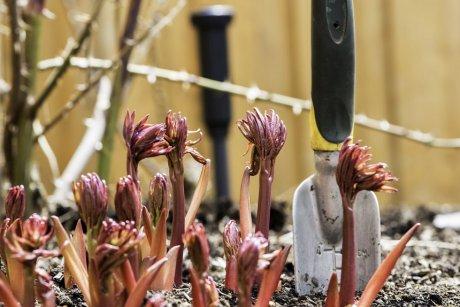
Pruning
Pruning on the bush is carried out only when buds have successfully set after flowering. If pruning is done very early, then the next season the bush will not be able to form buds. It is customary to cut ito hybrids only in the third year after the first flowering. The bush is cut to 15-20 centimeters, then mulched, covered for the winter. As for the removal of faded buds, it must be timely. Removing the wilted flowers will enable further flowering.
Preparing for the winter period
The main technique that prepares the bushes of Ito-pions for winter is mulching. The soil is covered in such a way that the roots of the bush, located almost horizontally, are covered with a layer of mulch 10 centimeters thick. For mulch, you should take a soil mixture that does not change the acidity index.
In winter, despite the frost resistance of the Ito varieties, it is necessary to additionally cover the bushes with non-woven material or special materials for the garden and vegetable garden. This condition is especially true for young peony bushes that are not pruned.
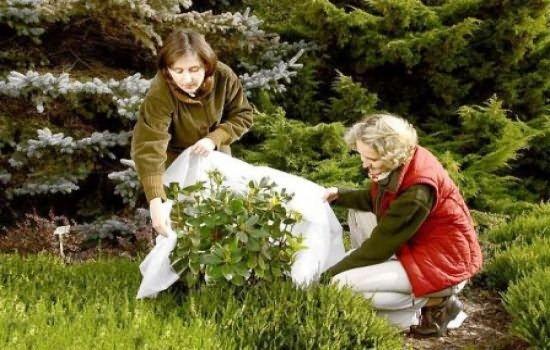
Peonies ito hybrids planting and care - Summer cottage, garden, vegetable garden, indoor plants
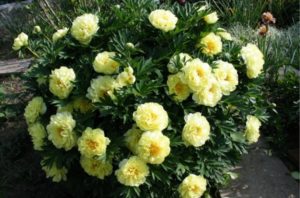
- 1 Ito-hybrids of peonies: photos, reviews, planting and care
- 2 ITO-hybrids of peonies: the best varieties with photos and names, description of species and rules of planting and care
- 3 ITO hybrids: what are these peonies, their correct planting, care and reproduction
- 4 The best varieties of peonies ITO-hybrids: photo, description, planting and care
- 5 Peonies ITO-hybrids: description of varieties, planting, reproduction and care
Peonies are native to Southeast Asia. These flowers were cultivated even before our era in China, Rome, Greece. Over the millennia, many varieties of peonies have been bred. However, flowers of a rich yellow color were obtained only in 1948 in Japan. The breeding work was carried out by the scientist Toichi Ito. It was by his name that the new variety was named, which received many good reviews from lovers of ornamental plants.
Of course, many domestic gardeners would like to plant an Ito hybrid of a peony on their plot. What is the difference between it and ordinary varieties and how to properly care for such varieties - we will talk about this later in the article. In principle, such plants are relatively unpretentious. But of course, they should be watered and fertilized from time to time.
Planting peonies - Ito hybrids: preparing a flower bed
It is best to plant Ito-peonies in late August - early September. The earth should be thoroughly loosened, getting rid of lumps. Small pits are dug under the plants themselves, so that after planting the buds are at a depth of 3-5 cm from the soil level. If they are too high or low, the peony will not bloom.
The dug holes are filled with pre-compiled nutrient soil. Prepare a mixture of manure or humus and garden soil. For deoxidation, a little ash or dolomite flour should be added to the soil. Experienced gardeners also advise adding a little phosphorus fertilizer to the mixture.
The hole should be filled about 2/3. On dense soils, you can add a little sand to the mixture, on peat soils - clay. Delenka in the pit is placed strictly in the center with a slight slope. Next, fill the pit with soil mixture completely.
ITO-hybrids of peonies: the best varieties with photos and names, description of species and rules of planting and care
In nature, yellow herbaceous peonies are very rare. To decorate gardens with unusual flowers, breeders crossed them with tree peonies for years. The first success was achieved by the Japanese scientist Toichi ITO.
The resulting plants were distinguished by exceptional coloration, dense foliage and abundant flowering. The best varieties of ITO-hybrids of peonies have become thanks to the selection work of American botanists.
Flowers are easy to care for, easily multiply by dividing the bush, resistant to low temperatures.
ITO-peonies: varieties with photos and names
The hybrid group of peonies is a perennial with traits of herbaceous and tree-like plants. Varieties, in the selection of which the tree peony was the basis, bloom at an earlier date.
Hybrids are characterized by variable color of petals.
From tree-like peonies, about the features of which you can read here "Tree peony - the choice for a garden is obvious", they inherited the presence of bright spots or shading on flowers.
History of selection of ITO-pions
Thanks to interspecific hybridization, the world of peonies has been enriched with varieties with bright colors - red, pink, and then coral. But despite all efforts, breeders for a long time did not manage to get yellow herbaceous peonies - an old dream of flower growers. Success in creating yellow peonies first came to the breeders of the Land of the Rising Sun. In 1948, Japanese scientist and breeder Toichi Itoh matched a parental pair. Maternal was herbaceous peony variety the lactic-flowered Kakoden, and the paternal yellow peony Kinko (AliceHarding). As a result of 1200 crosses, 6 plants with a yellow color were obtained. Ito was no longer alive when the plants bloomed fully. The work was completed by his widow and assistant.
Louis Smirnov, a Russian émigré, owner of a nursery in the United States, purchased these novelties from the widow of Ito and then issued 4 yellow varieties in the American Peony Society (AMOP) Register in the herbaceous peonies section: Yellow Dream, Yellow Crown, Yellow Emperor and Yellow Heaven under the authorship of Ito -Smirnov. According to the rules, the first name belongs to the breeder, and the second to the owner of the rights. They were named Ito-peonies after the author's name.
Later, a separate section was allocated in the AMOP Register: Intersectional Hybrids - "Intersectional hybrids", implying their origin from peonies from different botanical sections: treelike and herbaceous. As a result, both names are used: Itohhybrids and IntersectionalHybrids. Breeders continue cross-sectional hybridization using combinations with paternal tree peonies - (P. lutea) and arboreal peonies (P. suffructicosa) - and maternal herbaceous peonies capable of setting seeds.
Pruning bushes
Buds appearing in the first two years should be removed immediately. Such early flowers, as already mentioned, will not be beautiful. But they are quite capable of weakening the bush and slowing down its development.
For mature plants, pruning is done in mid-June. At this time, all dry inflorescences are simply removed.
When pruning, it is also important to remove any leaves and petals that have fallen to the ground. This is done to reduce the risk of developing fungal diseases. Actually, the very pruning of old flowers contributes to the establishment of new reproduction buds
The more they are formed, the more magnificent and beautiful the peonies will be for the next year.
Actually, the very pruning of old flowers contributes to the establishment of new reproduction buds. The more they are formed, the more magnificent and more beautiful the peonies will be for the next year.
Bartzell's peonies in landscape design
 Ito hybrids look great in landscape design. They can be used to decorate compositions or single planting. Due to the stability of the peduncles, the bush retains its shape for a long time. Despite the large flowers, it remains unchanged, its stems do not go down.
Ito hybrids look great in landscape design. They can be used to decorate compositions or single planting. Due to the stability of the peduncles, the bush retains its shape for a long time. Despite the large flowers, it remains unchanged, its stems do not go down.
With the onset of the first autumn frosts, peony leaves remain the same decorative and do not lose their attractiveness. The scent of the flowers and the long blooming period have made the flower very popular with flower growers.
Peonies look great in bouquets, they last a long time when cut. If you plant a Bartzell peony in your garden and take care of it properly, the garden will only benefit from this. During the flowering period, it will have a fragrant aroma of flowers. With his large flowers, he can decorate the landscape design of any garden.
Bartzella peony flower


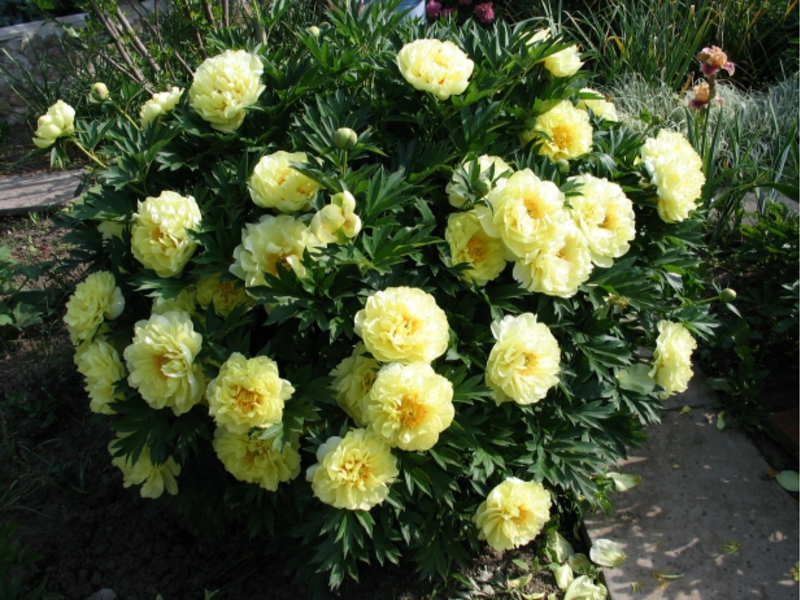
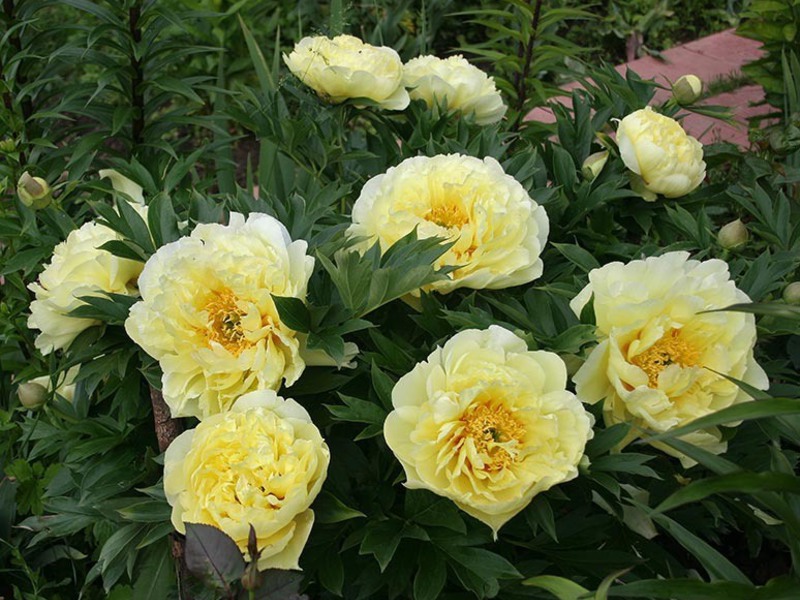
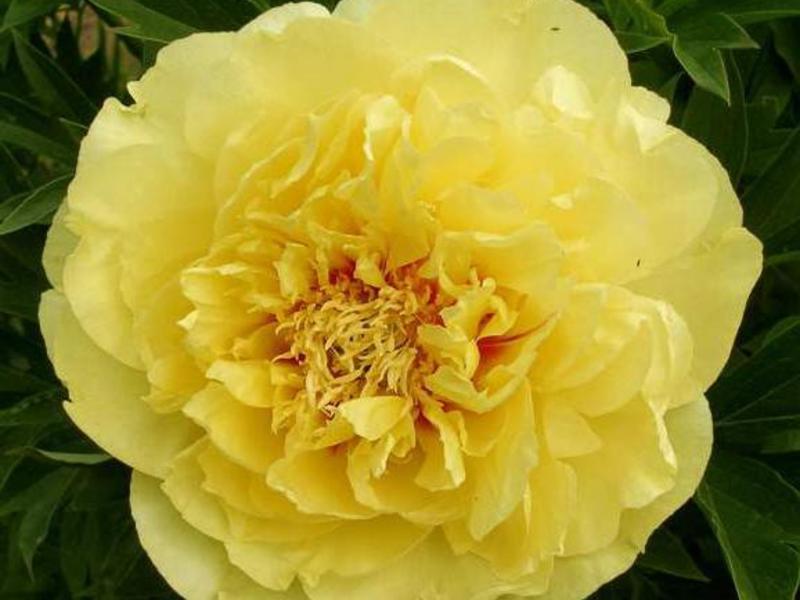
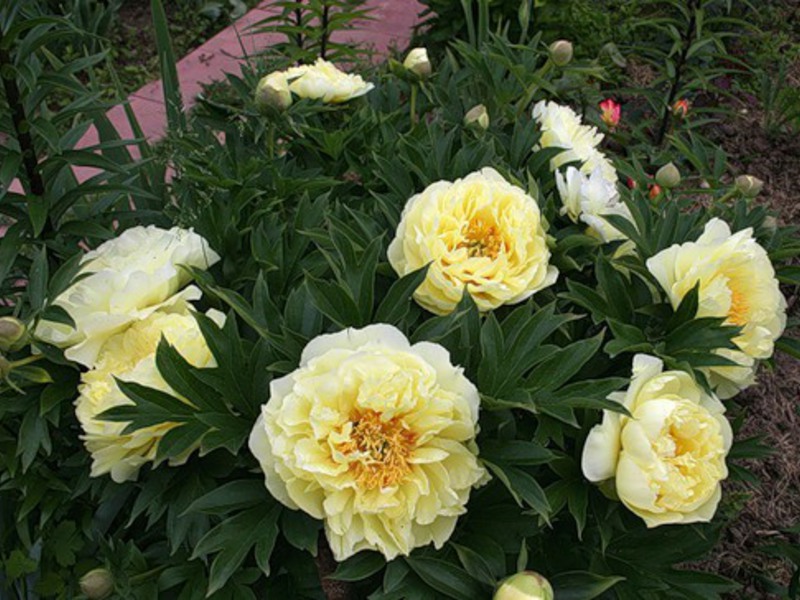

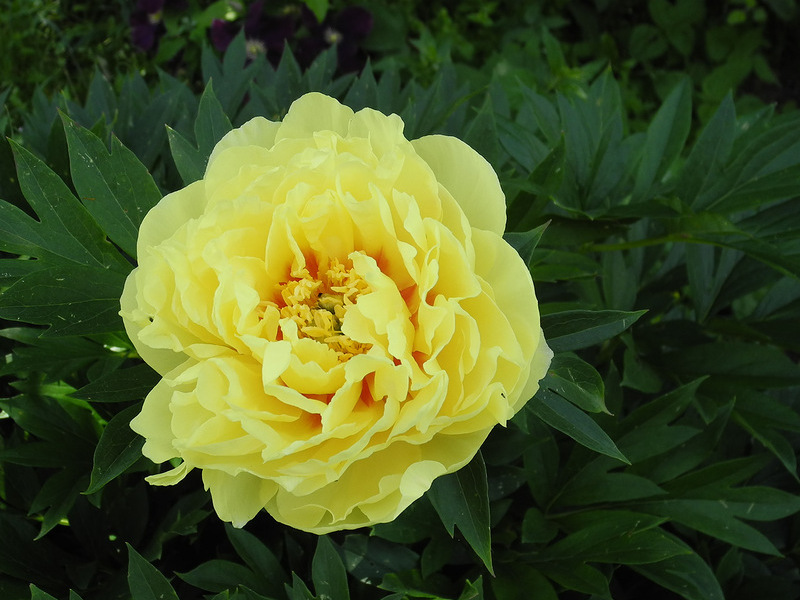
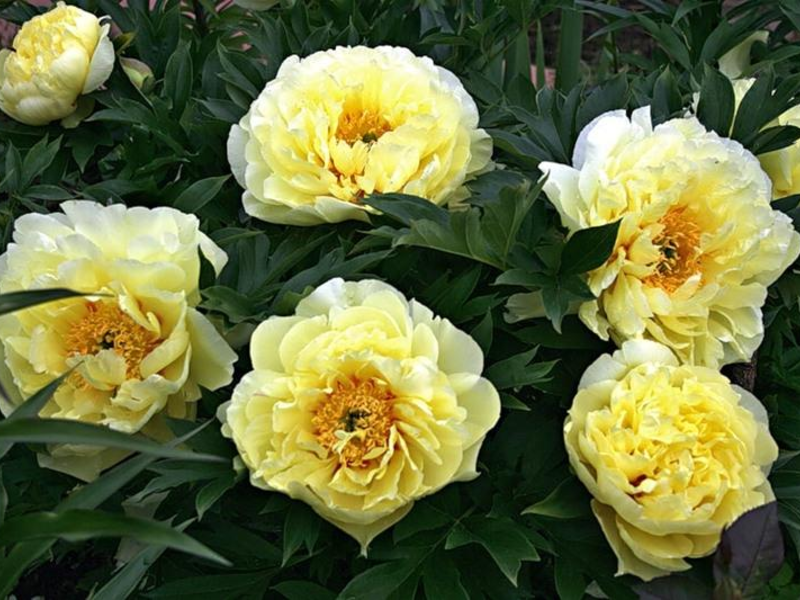
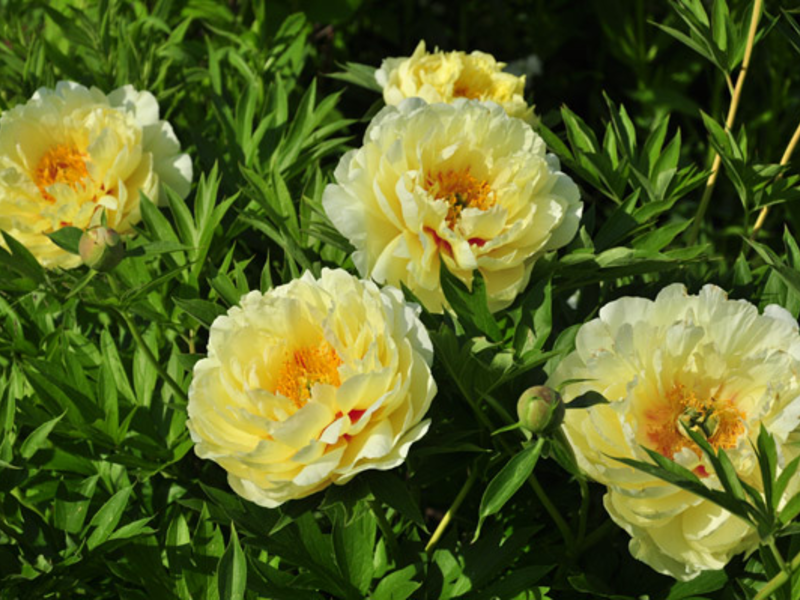
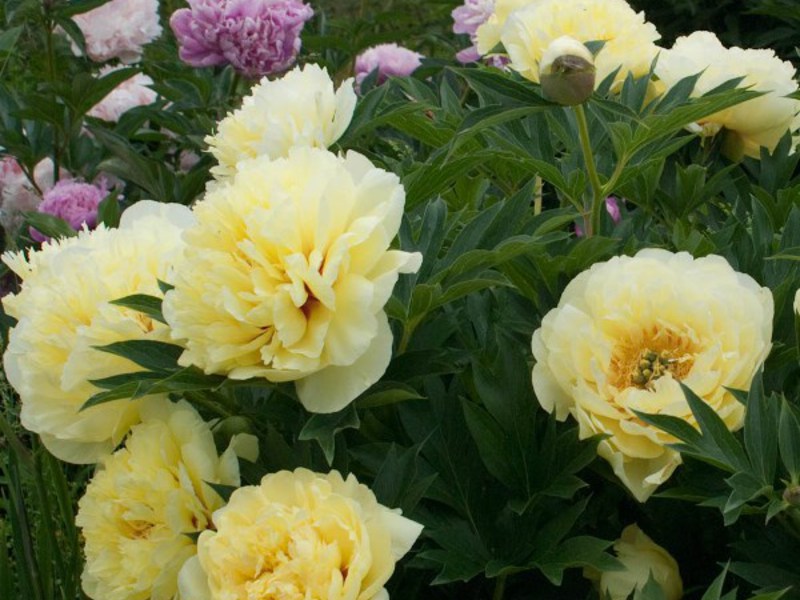
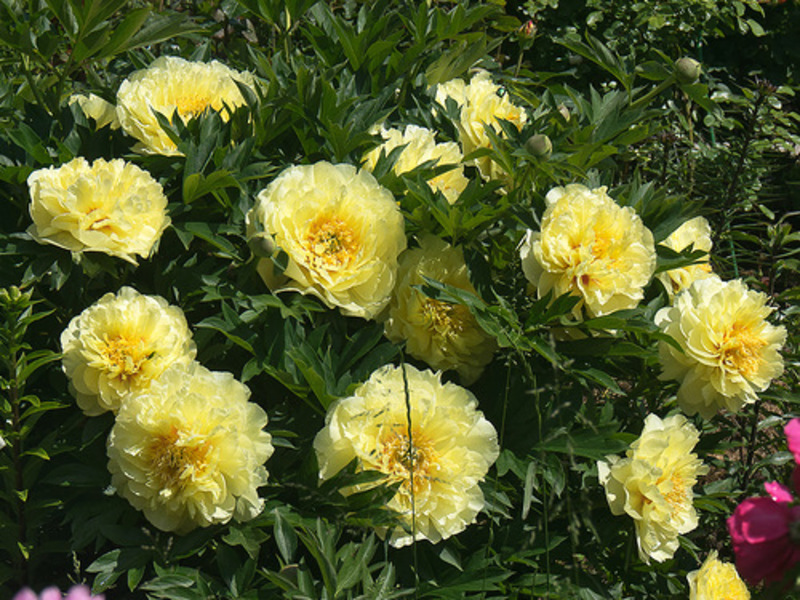

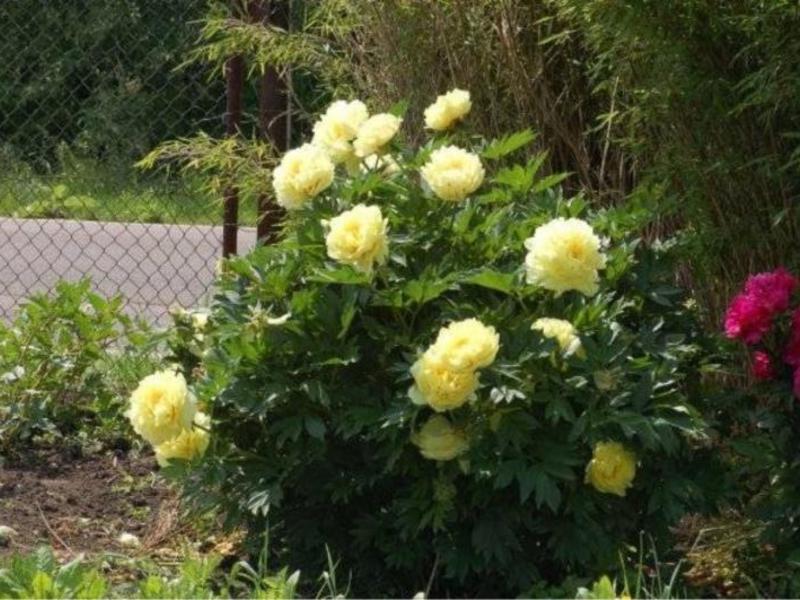



Reproduction of Ito peonies: common methods
Common peonies can propagate by seed and vegetatively, although the latter method is much preferable. Ito peonies are hybrid varieties, therefore, when propagated by seeds, they completely lose all species characteristics. In addition, getting seeds from flowers is also quite difficult. Therefore, the only way to get an Ito peony seedling is to propagate the bush using the method of dividing the rhizome. This is also a difficult method, but because of this, the plant is considered very rare and expensive.
Reproduction of Ito peonies by dividing the rhizome
- First of all, it is worth remembering that it is recommended to divide the bushes of Ito peonies only when they reach the age of 5-6 years. Otherwise, the seedlings will not take root well and may die.
- In the future, the bushes of Ito peonies must be divided every 2-3 years, since over time the root system becomes lignified. The fact is that the roots of such peonies are not simple tubers with buds, but a kind of log with an isthmus. It is difficult to separate them.
- The best time to divide the rhizome is spring or autumn. If you chose spring, you need to immediately decide where to plant young plants, as they very quickly begin to take root and take root. However, springtime is bad in that you always have to water the plant, as the roots grow slowly and cannot get water for themselves. Autumn, however, is more preferable for reproduction, since the plant manages to get stronger and take root before the onset of winter.
- First of all, you need to carefully dig out the peony bush and shake its roots from the ground.
- At the exit from one bush, no more than 2-3 fragments should be obtained. Moreover, each fragment should have 3-5 buds and the same number of roots.
- It is recommended to divide the rhizome with a sharp hacksaw, while making sure that the damage is evenly on all fragments.
- If there are small areas of rot on the roots, they must be cleaned off.
- Each piece must be planted immediately, after pretreating with growth stimulants.
- Perhaps this method of reproduction will seem difficult for an inexperienced gardener, but with a little skill everything will work out.


